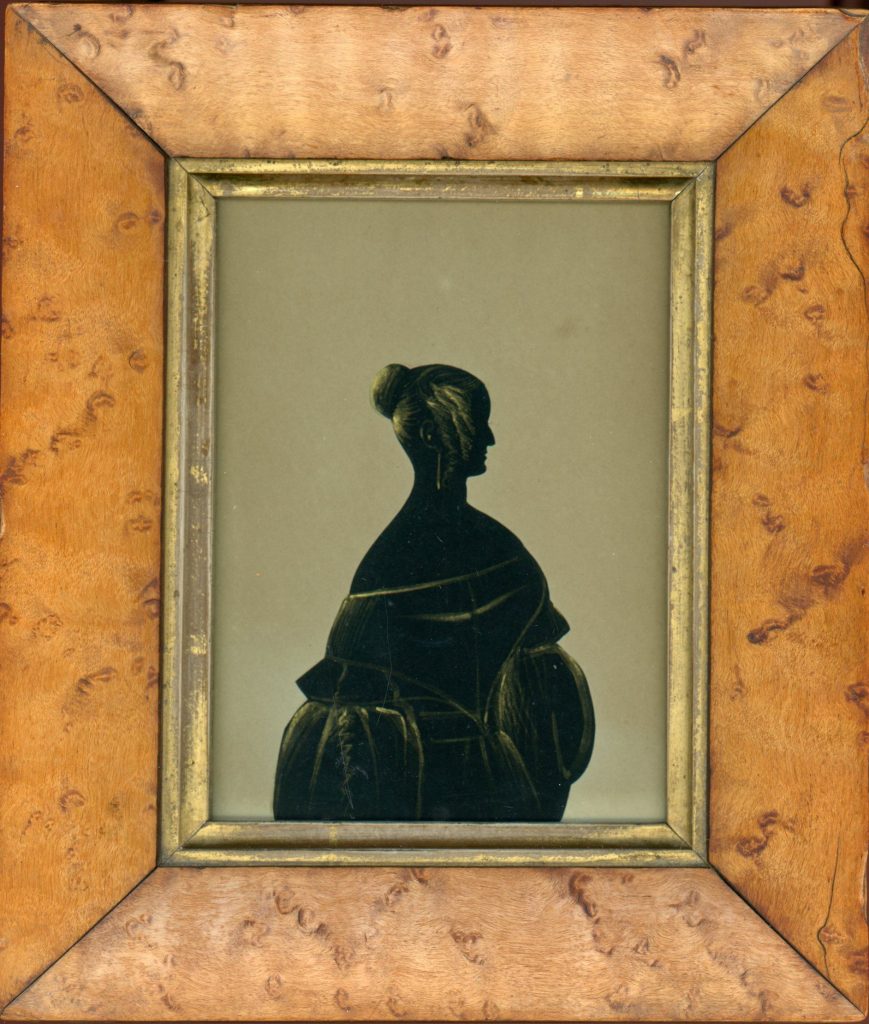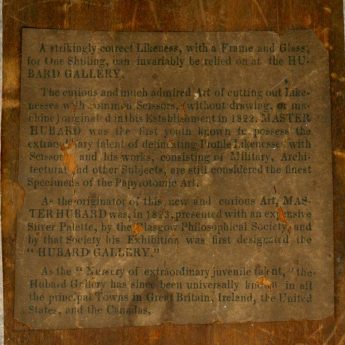
Gigot Sleeves
Portrait miniatures, silhouettes, portraits & an omnium-gatherum of historical interest & character.
Enquiries and orders
Gigot Sleeves
Early 1830s
Sold
During the early 1830s, voluminous gigot sleeves were still fashionable though now they were set lower which, together with wide necklines and pointed bodices, had the effect of drawing dresses down and giving young ladies sloping shoulders as seen here.
The silhouette has been cut and gilded by the Hubard Gallery with their trade label no. 5 (in use during 1831-1832) pasted to the backing board of the frame. It is set in a well-figured bird’s eye maple veneer frame with a gilt slip.
Following the initial success of the Hubard Gallery, its founder Mr W. C. Smith went on to employ other artists with varying abilities and styles. According to newspaper advertisements, the Gallery was based in Oxford during most of 1831 and in Cambridge during 1832.
By 1838, the management of the Hubard Gallery was taken over by Mr E. Parker who ran an advertisement in The Royal Leamington Spa Courier and Warwickshire Standard(December 1838) that challenged rival silhouettist Charles Barber “to repeat his aspersions on the Hubard Gallery”. Quite what the dispute was about is unclear but it had certainly been escalated by the throwing of a large stone “through the window over the shutters in to the Hubard Gallery, at a printed paper, containing the word Papyrotomia &c, which did considerable damage”. Never a dull moment in the world of silhouette cutting it would seem!
Item Ref. 6204
Size: framed, 184 x 160mm (7¼ x 6¼")
